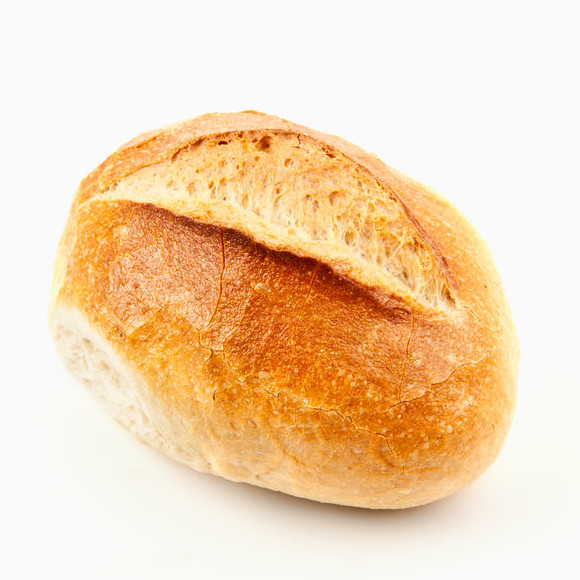
How The FDA Defines Breads and Rolls
What is the difference between a bread and a roll?
Baked goods such as breads and rolls are legally defined and identified by the Food and Drug Administration (FDA) based on their formulation (type and amount of ingredient used) and unit weight.
The FDA provides Standards of Identity for different food products to protect consumer’s interests and help food manufacturers comply with formulation and processing conditions needed to name a product as such.
Baked products categories
According to weight, bakery products can be classified as bread, rolls and buns (for hamburger and hot dogs):1
- Bread: According to CFR 21 part 136 (rule enforced by the FDA), bread is a loaf-sized bakery product that weighs at least ½ pound (454/2 g). The weight should be that of the finished product after baking and cooling.
- Rolls, buns: Following the same rule, rolls or buns are small-sized bakery products of unit weight less than ½ pound (454/2 g) after cooling.
Bakery products that have a Standard of Identity are:1
|
|
White bread, rolls, and buns1
The FDA defines these as bakery products that are produced by baking a mixed yeast-leavened dough that contains refined wheat flour, yeast (any of its commercial forms) and hydrating or moistening ingredients such as water, whole eggs, milk and liquid sweeteners.
Breads and rolls may contain additional ingredients such as:
|
|
The finished product must contain at least 62% total solids (38% moisture or less). Depending on weight, the name of the food can be “bread,” “white bread,” “rolls,” “white rolls,” “buns” or “white buns.”
Egg bread, rolls, and buns1
Bakery products that contain a minimum of 2.56% whole egg solids (based on the weight of the baked product) are labeled “egg bread,” “egg rolls,” or “egg buns.”
Milk bread, rolls, and buns1
To be legally designated as “milk bread,” “milk rolls” or “milk buns,” the product must conform to the following composition specifications:
- Milk (either liquid or reconstituted) is the only moistening ingredient permitted.
- At least 8.2% of milk solids (based on the weight of formula flour) must be used in the formula
The FDA prohibits the use of dairy products other than milk in “milk bread.” Thus, the formula cannot contain any buttermilk, cheese whey, cheese whey product or milk protein.
Enriched bread, rolls, and buns1
To be designated as “enriched bread,” bread, rolls or buns are enriched with vitamins and minerals (in addition to those incorporated during flour treatment at mill). Enrichment specifications per pound of baked product include:
- 1.8 milligrams of thiamin
- 1.1 milligrams of riboflavin
- 15 milligrams of niacin
- 0.43 milligrams of folic acid
- 12.5 milligrams of iron
- 600 milligrams of calcium
Raisin bread, rolls, and buns1
The FDA calls for a minimum of 50% unsoaked raisins (based on total weight of flour) for the production and designation of “raisin bread,” “raising rolls” or “raisin buns.” This usually yields dough containing approximately 15–20% raisins and a baked product with 20–25% of its own weight as raisins.
Whole wheat bread, rolls, and buns1
FDA requires that “whole wheat bread,” “whole wheat rolls” and “whole wheat buns” be made from 100% whole wheat flour (no white or refined flour is permitted here). Products labeled as “Graham bread” or “entire wheat bread” can be included in the “whole wheat bread” category.
Bakery products with no Standards of Identity
Bakery products that currently do not have a Standard of Identity include:
- Variety bread (rye bread, multigrain bread, wheat bread, fiber bread, whole grain bread).
- Artisan bread (ciabatta, baguette, focaccia) and sourdough bread.
Providing Standards of Identity is essential for continued innovation by the bakery industry and to launch new products to meet expectations of younger generations.
In order to properly comply with the Standards of Identity in terms of weight of finished product, the following operational aspects need to be taken into account:
- Fermentation and bake loss
- Scaling weight during dough dividing
- Bread slicing parameters
References
- Food and Drug Administration (FDA). US Department of Health and Human Services. CFR – Code of Federal Regulations Title 21, Part 136 Bakery Products, https://www.accessdata.fda.gov/scripts/cdrh/cfdocs/cfcfr/CFRSearch.cfm?CFRPart=136&showFR=1, Accessed 22 January 2019.

